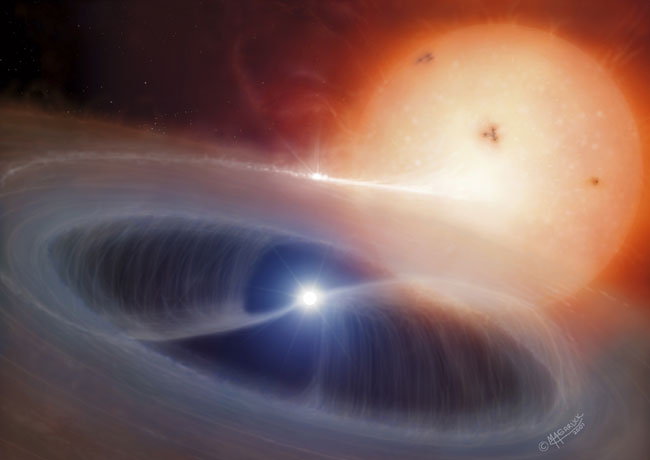
|
Credit & Copyright: Mark Garlick
(Space-art)
Explanation:
How can two stars create such a strange and intricate structure?
Most stars are members of
multiple-star systems.
Some stars are members of close
binary systems
where material from one star swirls around the other in an
accretion disk.
Only a handful of stars, however, are members of an
intermediate polar, a system featuring a
white dwarf star with a
magnetic field that significantly pushes out the inner
accretion disk,
only allowing material to fall down its magnetic poles.
Shown above is an artist's depiction of an
intermediate
polar system, also known as a
DQ Hercules system.
The foreground white dwarf is so close to the normal star that it
strips away its outer atmosphere.
As the white dwarf spins, the columns of infalling gas rotate with it.
The name
intermediate polar derives from observations of emitted light
polarized
at a level intermediate to non-disk binary systems known as
polars.
Intermediate
polars
are a type of
cataclysmic variable star system.
|
January February March April May June July August September October November December |
| ||||||||||||||||||||||||||||||||||||||||||||||||
NASA Web Site Statements, Warnings, and Disclaimers
NASA Official: Jay Norris. Specific rights apply.
A service of: LHEA at NASA / GSFC
& Michigan Tech. U.
Based on Astronomy Picture
Of the Day
Publications with keywords: binary star
Publications with words: binary star
See also:
